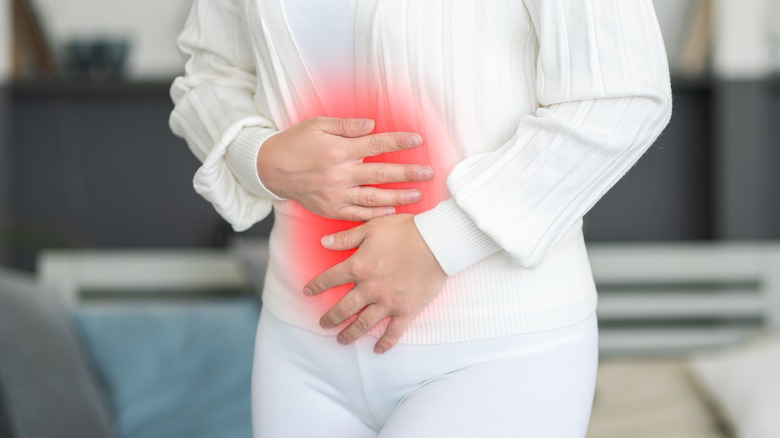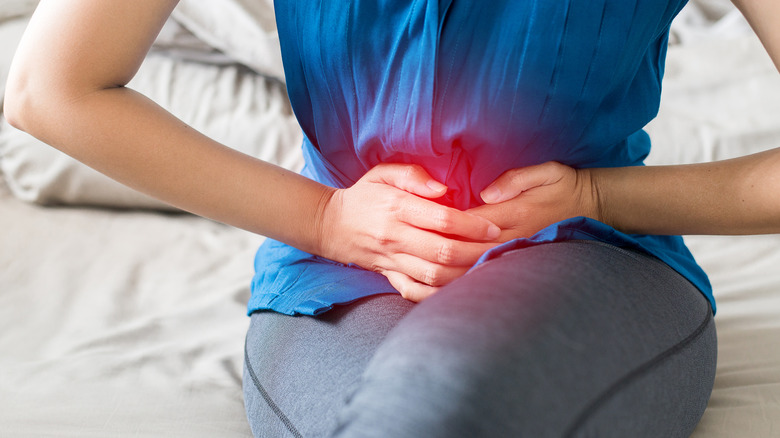Perineum Pain In Women: What Does It Mean?
The perineum is a region of the body located between the anus and the genitals (via the Cleveland Clinic). In an illustration provided by the clinic, the perineum appears behind the vagina and in front of the anus in women. In men, it sits in between the anus and the penis. The perineum has several important functions. It contains various muscles, membranes, and connective tissues that support the pelvic organs. It also contributes to sexual arousal, as well as bowel and bladder control, according to the Cleveland Clinic.
The perineum contains several nerve endings — feeling pain in the region is not uncommon, explains Healthline. According to the source, problems with the perineum, such as pain or injury, can be caused by various factors. If you are experiencing problems with your perineum, it's important to see a healthcare provider. They can help determine the cause, provide a diagnosis, and discuss the appropriate treatment options.
What causes perineum pain in women?
Perineum pain in women can be caused by various factors, including childbirth, injury, infection, and underlying medical conditions. During childbirth, the perineum stretches to allow the baby to pass through the birth canal. This can sometimes result in tears or incisions (episiotomies) in the perineum (via the Cleveland Clinic).
According to Healthline, trauma or injury to the perineum can also result in pain. This can be from sexual assault, abuse, a fall, or a sports-related injury, which can result in damage to the blood vessels and nerves. According to the source, when pus-filled abscesses form in the vulva or anus due to an infection, this can also result in pain in the perineum. Lastly, various underlying medical conditions, such as vulvodynia (chronic pain of the vulva) or interstitial cystitis (chronic bladder inflammation), can cause perineal pain, according to Healthline. These symptoms may warrant a visit to your doctor.
How is perineal pain treated?
Treatment for perineal pain will depend on the underlying cause. Depending on your case, a combination of treatments may be needed to effectively manage the pain. For example, if the pain is due to childbirth, treatment may involve sitz baths and medication, per the Cleveland Clinic. Sitz baths involve sitting in a tub of warm water for short periods to help reduce inflammation and pain. If the pain is due to an infection or abscess, treatment may involve antibiotics (via MyHealth.Alberta).
If the pain is caused by vulvodynia, treatment may include medications, such as tricyclic antidepressants or topical anesthetics. It might also involve procedures, such as a vulvar vestibulectomy (surgical removal of affected tissue), per the Mayo Clinic. If the pain is caused by interstitial cystitis, treatment may include medications to reduce inflammation or bladder instillations (injections of medication directly into the bladder), per the National Health Service.



